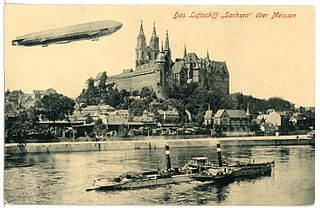 W
WLZ 17 Sachsen was the fourth Type H improved Schwaben-class Zeppelin that first flew on 3 May 1913 and operated as a passenger airship with DELAG until WWI, when it was commandeered for service with the Imperial German Army. After being transferred to the Imperial German Navy, LZ17 was dismantled in 1916.
 W
WM2-class zeppelin LZ 32, given tactical number L 7, was a rigid airship operated by the Kaiserliche Marine, which flew 164 times, including 77 reconnaissance missions over the North Sea, with several unsuccessful attempts to attack English coastal towns. Brought down on 4 May 1916 by anti-aircraft fire from HMS Phaeton and HMS Galatea, she was destroyed by Royal Navy submarine HMS E31 off Horns Reef.
 W
WThe airship LZ 37 was a World War I Zeppelin of the German Kaiserliche Marine. It was the first Zeppelin to be brought down during the war by an enemy plane on the night of 6 to 7 June 1915.
 W
WThe British NS class non-rigid airships were the largest and last in a succession of "blimps" that served with the Royal Naval Air Service during World War I; developed from experiences gained with earlier classes to operate off the east coast of Britain on long-range patrols. Despite early problems, examples of the class went on to break all flying records for non-rigid airships, and the type became regarded as the most efficient of its kind.
 W
WSS class airships were simple, cheap and easily assembled small non-rigid airships or "blimps" that were developed as a matter of some urgency to counter the German U-boat threat to British shipping during World War I. A secondary purpose was to detect and destroy mines. The class proved to be versatile and effective, with a total of 158 being built in several versions.
 W
WLZ 72 was an R Class super-zeppelin belonging to the Imperial German Navy. It was commanded by Kapitänleutnant Heinrich Mathy, an experienced commander, and took part in several raids over London during World War I. It also participated in a reconnaissance role during the Sunderland raid of 19 August 1916. Its last flight was launched late at night on 1 October 1916. Several miles north of London, it was caught in searchlights and anti-aircraft fire. During this engagement, 2nd Lt. Wulfstan J. Tempest was on patrol and spotted the zeppelin. He proceeded to engage the airship with incendiary rounds, causing the ship to burst into flames and crash in a field near Potter's Bar. After this disastrous crash, the Imperial German Navy began decreasing its amount of zeppelin raids. The entire crew died, and were originally buried there but were transported to Cannock Chase in the 1960s.
 W
WLZ 74 was an R Class super-zeppelin belonging to the Imperial German Navy.
 W
WThe Zeppelin P Class was the first Zeppelin airship type to be produced in quantity after the outbreak of the First World War. 22 of the type were built as well as 12 of a lengthened version, the Q Class . They were used for many of the airship bombing raids on the United Kingdom in 1915-16, for naval patrol work over the North Sea and Baltic and were also deployed on the eastern and south-eastern fronts.